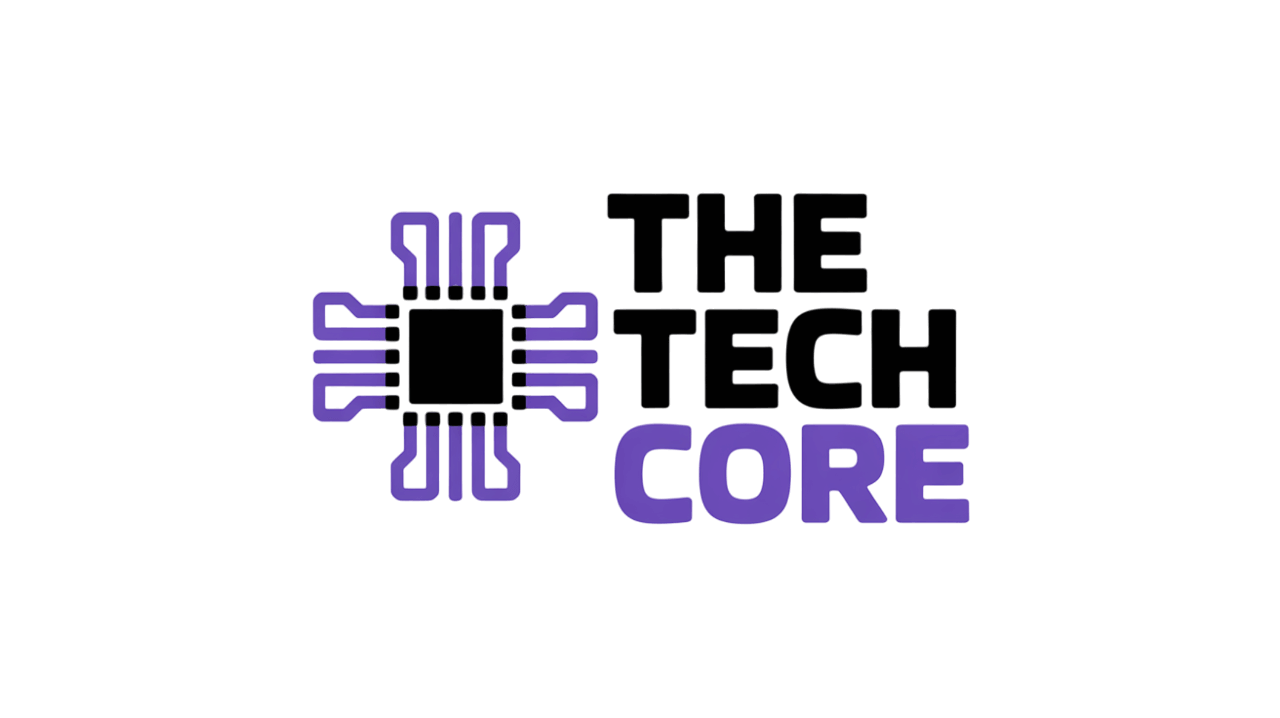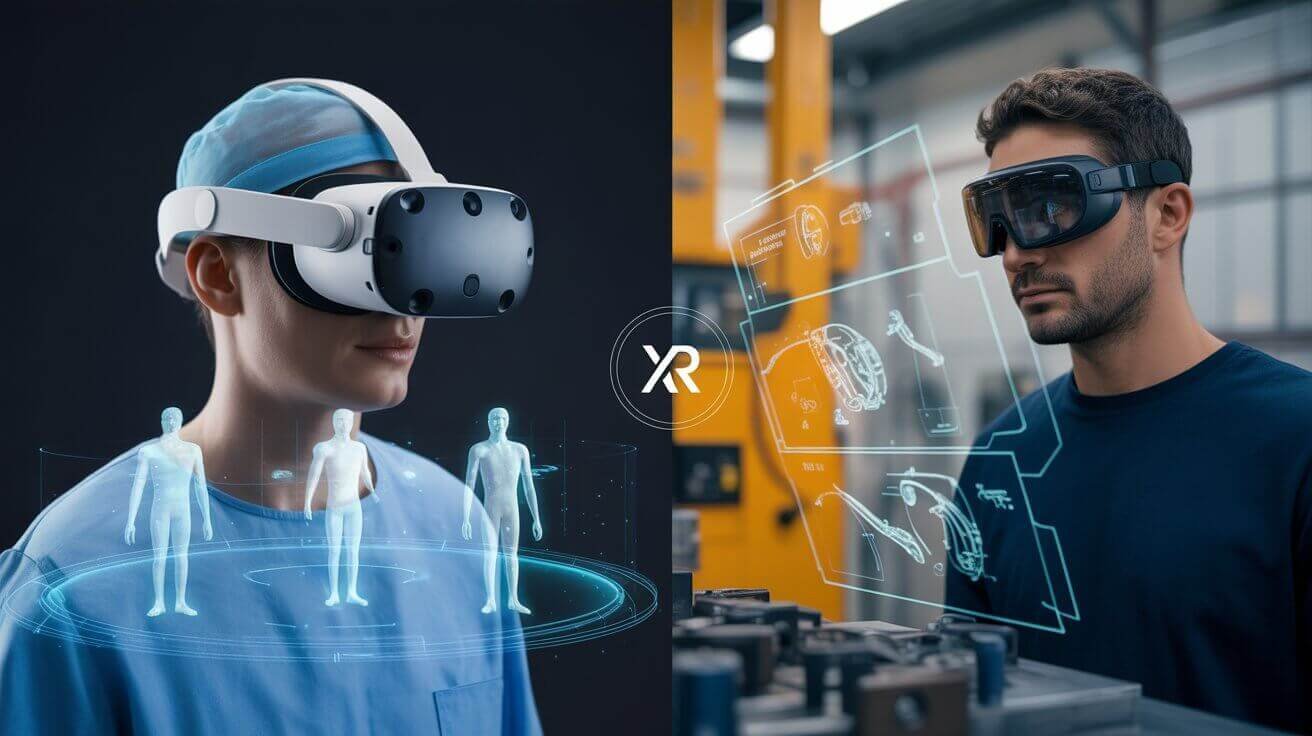The world around us is changing rapidly. Moreover, immersive technology applications are at the heart of this transformation. Extended Reality (XR) reached USD 7.55 billion in 2025 and is projected to deliver USD 44.14 billion by 2030, reflecting a 42.36% CAGR according to Mordor Intelligence. But here’s what’s really exciting—these immersive technology applications aren’t just growing fast; they’re completely changing how we work, learn, and interact with digital content.
So what exactly makes these technologies so revolutionary? Simply put, immersive technology applications blend our physical and digital worlds in ways we’ve never experienced before. Whether it’s a surgeon practicing complex procedures in virtual reality or a manufacturing worker getting step-by-step AR guidance for equipment maintenance, these tools are moving far beyond gaming into mission-critical business applications.
What Makes Immersive Technology Applications So Powerful?
Extended Reality (XR) serves as an umbrella term covering three main technologies: Virtual Reality (VR), Augmented Reality (AR), and Mixed Reality (MR). However, when we talk about immersive technology applications, we’re really discussing how these tools solve real-world problems.
Virtual Reality creates completely digital environments where users can practice dangerous procedures safely. Meanwhile, Augmented Reality overlays digital information onto the real world, helping workers perform complex tasks with greater accuracy. Additionally, Mixed Reality combines both approaches, allowing users to interact with digital objects as if they were physically present.
Augmented Reality led with 43.2% share in 2024 and is forecast for 42.7% CAGR, reflecting its blend of digital overlays with uninterrupted real-world visibility according to industry research. This growth isn’t just numbers—it represents real businesses seeing genuine returns on their investments.
Healthcare: Where Immersive Technology Applications Save Lives
Healthcare represents one of the most compelling use cases for immersive technology applications. Consequently, medical schools and hospitals are rapidly adopting these tools to enhance training and patient care.
Extended reality in medical education is being used in various applications such as surgical procedure simulation, drug interaction, visualization, patient scenario simulations, medical technology applications, and so on according to research by Tipping Point Media. Furthermore, these implementations are showing measurable improvements in learning outcomes.
Take surgical training, for example. Instead of waiting months to observe real surgeries, medical students can now practice procedures repeatedly in VR environments. The Johns Hopkins School of Nursing has implemented VR training at all levels, from doctoral to prelicensure nursing. This approach allows students to make mistakes safely while building confidence before working with actual patients.
But immersive technology applications in healthcare go beyond training. A study by Hadassah’s Research & Innovation Center and XRHealth shows that virtual reality can significantly reduce pain and anxiety for burn patients during wound dressing changes. These real-world applications demonstrate how XR technologies directly improve patient outcomes.
Manufacturing: Boosting Efficiency Through Immersive Training
Manufacturing companies are discovering that immersive technology applications deliver impressive returns on investment. XR has achieved clear returns on investment (ROI) for 75% of respondents, with benefits that include reduced material waste, time savings, and cost savings.
Here’s why these applications work so well in manufacturing settings:
Safety Training: Workers can experience dangerous scenarios without actual risk. For instance, they might practice responding to equipment malfunctions or chemical spills in a controlled virtual environment.
Equipment Maintenance: AR applications guide technicians through complex repair procedures step-by-step. This reduces errors and ensures consistent maintenance across different locations.
Quality Control: XR’s application in design and quality control demonstrates its versatility, with manufacturers enjoying reduced material waste and enhanced product quality.
One particularly compelling example comes from the automotive industry. BMW is using Nvidia’s Omniverse platform to plan a new factory in which people and robots work closely together and engineers collaborate in a shared virtual space. This demonstrates how immersive technology applications can revolutionize not just training, but entire production planning processes.
Education: Creating Engagement That Actually Sticks
Traditional classroom learning often struggles with engagement and retention. However, immersive technology applications are changing this dynamic by making abstract concepts tangible and interactive.
More than half of respondents in higher education had invested in at least 50 extended reality headsets. This investment reflects growing recognition that these tools significantly improve learning outcomes.
Consider anatomy education. Instead of studying from textbooks, students can now walk inside a beating heart or examine neural pathways up close. Students can see, for example, what happens during a stroke or heart attack. This level of immersion creates understanding that traditional methods simply can’t match.
Furthermore, these applications aren’t limited to medical education. History students can visit ancient Rome, engineering students can design and test structures in virtual environments, and language learners can practice conversations with AI-powered virtual humans.
Practical Implementation: Getting Started With Immersive Technology Applications
If you’re considering implementing immersive technology applications in your organization, here are some actionable steps:
Start Small and Specific: Be extremely specific about the intention of your initial XR project. Consider where XR tools could provide the greatest ROI. Don’t try to solve every problem at once—focus on one clear use case first.
Assess Your Current Training Challenges: Where do employees struggle most? Are there safety concerns with hands-on training? Do you have expensive equipment that’s difficult to access for practice? These pain points often represent the best opportunities for immersive technology applications.
Consider Content Creation Costs: Developing high-quality XR content remains expensive, with typical development budgets ranging from $500,000 to several million dollars. However, the ROI often justifies these initial investments, especially for training that needs to be delivered repeatedly across large organizations.
Plan for Device Management: Success requires more than just purchasing headsets. You’ll need systems for content distribution, device updates, and user management across your organization.
The Future of Immersive Technology Applications
Looking ahead, several trends will shape how these technologies evolve:
AI Integration: Qualcomm’s on-glass generative AI showcases context-aware overlays that anticipate user needs, positioning silicon roadmaps around XR-optimized neural processing. This means future applications will become increasingly intelligent and personalized.
5G and Edge Computing: Five-generation mobile networks paired with edge computing have erased latency barriers, making millisecond-accurate visualization practical on factory floors and in surgical suites.
Cross-Device Compatibility: Users will seamlessly transition between different XR devices while maintaining access to their digital content and preferences. This interoperability will make immersive technology applications more practical for organizations with diverse device ecosystems.
Lower Costs and Better Hardware: As technology matures, devices are becoming lighter, more comfortable, and more affordable. By 2025, AR and VR headsets will become lighter, more comfortable, and offer higher-resolution displays.
Overcoming Common Implementation Challenges
Despite their potential, immersive technology applications face several barriers to adoption. Current devices average 2–3 hours of active use, with high-performance applications reducing battery life even further. However, manufacturers are actively addressing these limitations.
Other challenges include:
Privacy Concerns: XR devices collect unprecedented amounts of data about users’ environments and behaviors. Organizations must develop clear policies for data collection and usage.
Motion Sickness: Some users experience discomfort with VR applications. Fortunately, newer devices and improved software are reducing these issues significantly.
Training Requirements: Staff need time to become comfortable with new technologies. However, most users adapt quickly when they see the clear benefits these tools provide.
The Economic Impact of Immersive Technology Applications
The numbers tell a compelling story about the economic potential of these technologies. The global extended reality market size was accounted at USD 189.31 billion in 2024 and it is expected to reach around USD 3261.32 billion by 2034.
But beyond market size, the real value lies in practical applications. Companies already using XR for business say that the most common use case for the tech is training, followed by product design. These use cases deliver measurable returns through reduced training costs, improved safety outcomes, and faster skill development.
For example, immersive technology applications can reduce the time needed to train new employees while improving retention rates. Traditional training methods often result in poor information retention, but XR experiences create memorable, engaging learning that sticks.
Conclusion: Your Next Steps Into Immersive Technology
Immersive technology applications represent more than just a technological trend—they’re becoming essential tools for organizations that want to stay competitive. Whether you’re in healthcare, manufacturing, education, or any other industry, these technologies offer concrete ways to improve training, reduce costs, and enhance outcomes.
The key is starting with a clear purpose. Identify your biggest training challenge or operational bottleneck, then explore how immersive technology applications might address it. Don’t wait for perfect technology—today’s solutions are already delivering impressive results for early adopters.
As we move through 2025, the question isn’t whether immersive technology applications will transform industries—it’s whether your organization will be leading this transformation or trying to catch up. The time to start exploring these powerful tools is now.








